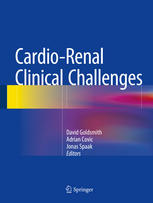

Most ebook files are in PDF format, so you can easily read them using various software such as Foxit Reader or directly on the Google Chrome browser.
Some ebook files are released by publishers in other formats such as .awz, .mobi, .epub, .fb2, etc. You may need to install specific software to read these formats on mobile/PC, such as Calibre.
Please read the tutorial at this link: https://ebookbell.com/faq
We offer FREE conversion to the popular formats you request; however, this may take some time. Therefore, right after payment, please email us, and we will try to provide the service as quickly as possible.
For some exceptional file formats or broken links (if any), please refrain from opening any disputes. Instead, email us first, and we will try to assist within a maximum of 6 hours.
EbookBell Team

4.0
76 reviewsIn modern medicine, the aging population is prone to many simultaneous cardiovascular (CV) risk factors which often produce co-incident pathology. Nowhere is this more obvious than in the interaction between Chronic Kidney Disease (CKD), Diabetes and diverse CV diseases (CVD). This is a complex and challenging area, as the presence of CKD/diabetes promotes CVD while also complicating its treatment. The emergence of CKD as a public health priority is one of the most challenging problems of modern medicine. It is now solidly established that renal dysfunction portends a high risk for cardiovascular disease. Cardiovascular diseases remains the main cause of death in western societies and the amplification of the death risk conveyed by coexisting CKD, even though still poorly understood, appears considerable. The bidirectional link that associates renal and cardiovascular diseases, the high risk of the death signalled by their coexistence and the considerable epidemiological burden imposed by this link is at the basis of the emergence of a new discipline aiming at making the borders between nephrology and cardiovascular medicine even more permeable than before. The term Cardio-Renal Syndrome was coined around 5 years ago to try to formalize this link, and act as a stimulus to interaction between clinical teams, researchers and others to achieve better management and outcomes for all.
This book takes clinical presentations and clinical problems as its base, and then discuss the evidence for best management of common clinical problems as well as the reasons for the complex interplay between the cardiac and renal systems. Moreover, it addresses the issue of organizing healthcare to maximize the opportunities for prevention and best healthcare economic returns, building on cutting edge initiatives at the Karolinska, Stockholm.
The book will be of immediate value and interest to all cardiologists and renal physicians.